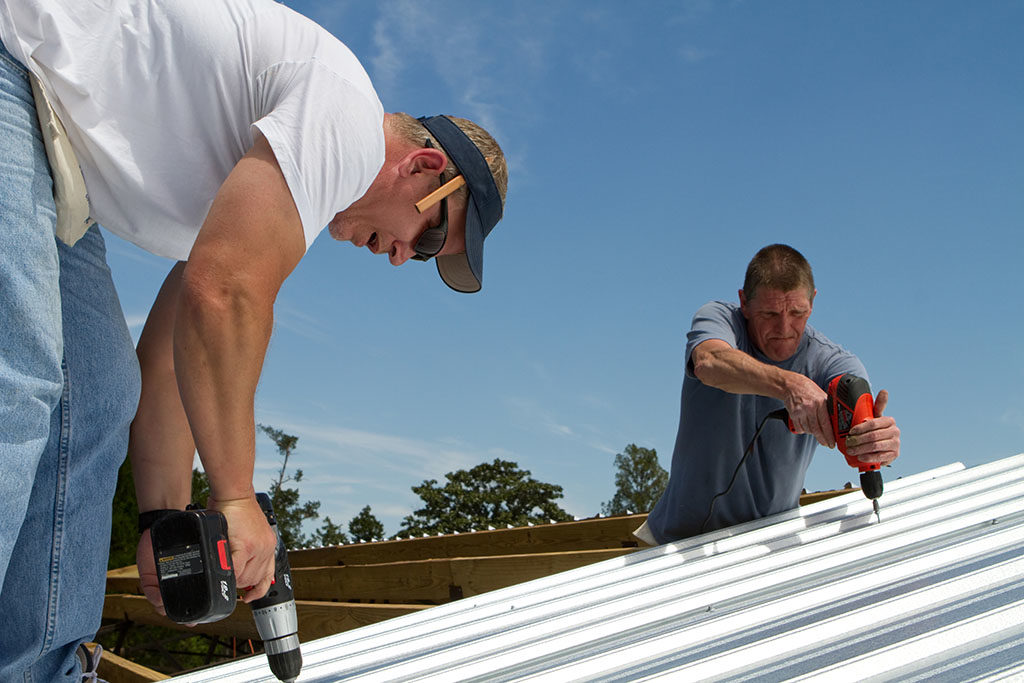Many homeowners and commercial property owners are interested in having less of an impact on the environment in Venice, Florida. They also like when their utility bills are lower because they are using green machines to operate their heating and cooling.

However, what many property owners do not realize is that their roof maybe the single biggest reason that air conditioning bills are high each year. Regardless, there are ways to create what is known in the industry as “cool roofs” that can bring down the overall temperature of your home or building. One of the advantages of amending the roof to be cooler is an overall lower air conditioning bill as well as extending the life of your current HVAC unit.
How cool roofs extend the life of your air conditioner
When your air conditioner has to work to capacity for long periods of the summer, it starts to take a toll on the machinery. Ultimately, the way you avoid replacing air conditioning as soon as the warranty expires is by not putting too much work on the machine in the first place. It also helps to regularly change the filter and have a scheduled maintenance appointment at least twice a year with an HVAC specialist. Basic maintenance aside, you do not need to lower the thermostat to uncomfortable levels in order to have an air conditioner that works past the warranty because you can lower the overall temperature of the building with a cool roof.
What is a cool roof?
You may have heard the term cool roof because it is a catchphrase that is being used by the federal government in America for reducing the country’s carbon footprint. The concept is fairly simple, and it is based on basic principles of science. In short, something that is white or a lighter color will reflect sunlight. An object that is a darker color, on the other hand, will absorb sunlight. In simple terms, when you have a blacktop parking lot, it can burn your feet if you are walking across it barefoot or in thin-soled shoes. Alternatively, concrete is usually lighter, and it does not absorb as much heat during extremely hot days. This simple concept is also active when it comes to your roof, and dark-colored shingles or tar on the roof can cause the overall temperature of your building to be higher. Although this could have some practical applications in areas of the country that have long winters with snow, areas of America like Florida that have long summers with extreme heat do not need a dark-colored roof.
Getting your tax deductions, rebates, incentives and grants
If you are already getting your roof color changed in order to bring down the overall temperature of your building, you could also be saving money in other ways with environmentally friendly improvements. For instance, there is a federal grant available that gives homeowners and property owners a tax rebate for installing insulation in the attic for the first time. Florida Green Building also has incentives for environmentally friendly home or commercial renovations that specifically address the Venice community.
Naturally, when you are having your roof color changed, you will have the opportunity to install insulation underneath it. The Department of Energy also has other helpful advice for homeowners and business owners that make environmentally friendly improvements to their property as well as a long list of tax rebates, grants and other programs. While the list is extensive, most of them mention that you will need to have a contractor perform the work in order to get your rebates or grants.
Learn more about the “heat island” effect
If you are interested in doing your part in creating a greener world, you will also hear more in the future about the heat island effect and the growing number of grants to combat it. Similar to the idea of changing a roof color in order to bring down the temperature of a home or building, the same scientific principle is applied to other large surfaces in cities. For example, blacktop absorbs more heat than concrete, and blacktop also stores the heat it absorbs during the day.
This means as the day progresses, the blacktop is still slowly releasing heat and it causes a city to be hotter for longer than the surrounding suburbs. As a property owner, you can significantly help the city save energy on cooling by doing your part to work against the heat island effect as often as possible. For instance, in addition to improvements on your own property, if there is an opportunity at your business to change the parking lot, you can suggest seeking out grants for replacing the blacktop with concrete or brick.
Gain LEED certification for your cool roof project
One of the biggest feathers in an environmentalist’s cap is LEED certification, and the scope of that process was expanded in 2016. For example, making changes to a property to combat the heat island effect by changing from blacktop to another material or building a cool roof can also help your company gain eligibility for LEED certification. According to the U.S. Green Building Council, the current LEED version four also includes homes as well as commercial or industrial properties.